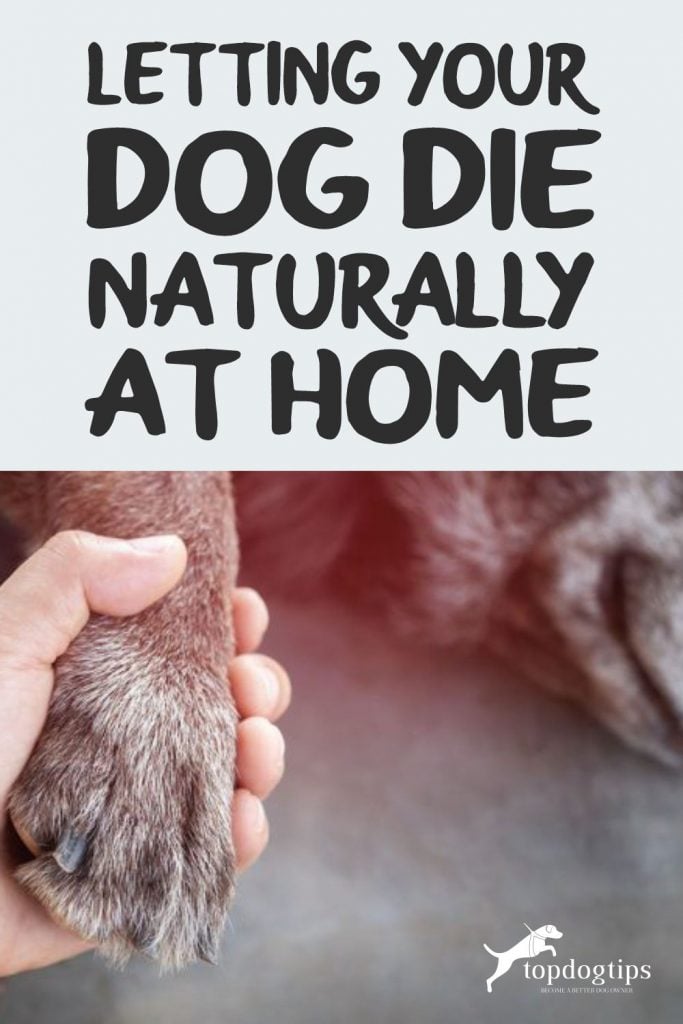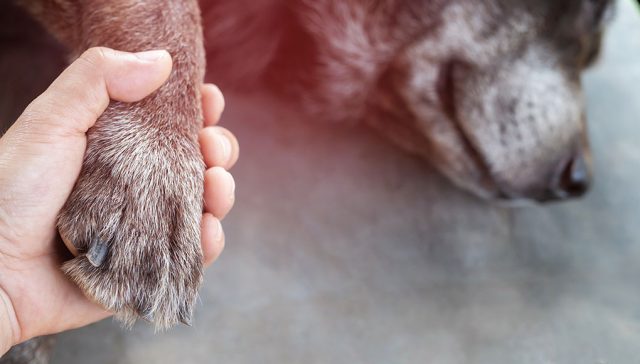
Table of Contents
- Dog Owners Struggle Letting Dogs Die Naturally
- After Letting Your Dog Die Naturally – The Phases of Mourning
- The Phase of Overcoming the Loss When You Let Your Dog Die Naturally
- Allowing A Dog Die Naturally, Don't Lose Sight
- What Can We Do Before and After to Overcome the Pain After Letting Your Dog Die Naturally?
- Pet Euthanasia is Not The Same as Natural Death (Dog Die Naturally)
- Conclusion
Many people are surprised by the emotions that arise after their four-legged companion's death, their dog. They come to feel, even guilty, for the pain they feel. Remembering that our dog was part of our life, routine, and home in these moments is worth remembering. In addition to the love we feel for him, he was family, a friend, and a partner. We ask ourselves, should I let this special being, my dog, die naturally at home?
Often, we are not aware that we not only mourn the animal we love so much, but we also mourn the loss of that happy time in our lives. It has given us during that time and for the bonds it helped create with other people and animals, which have become important to us.
So, how do we let a dog die naturally at home? Let’s look at some of the things involved when our loved one passes and if that is the right decision for you.
Dog Owners Struggle Letting Dogs Die Naturally
The youngest member of the house and the elderly who live with only their dog's company are the people most affected by this loss. We should not leave them alone, and it is our duty to be attentive to their different emotional states.
It is important to take care of yourself during this difficult time. We should not be ashamed of feeling pain and crying for a being who has been with us for so long and throughout his life. The dog has probably lived a large part of its life in our company. We have seen him grow and become an adult and even an old partner. It is normal to feel apathetic when they leave, not wanting to see people, not feeling like anything, even not wanting to eat, and so on.
Surely, there will be people who do not understand these feelings or know how to value the sadness they cause (especially those who have always thought that “it is nothing more than a dog”). The company of other animal lovers can be essential. In these moments, it is more important than ever to have someone to share feelings with. Make an effort to talk about the loss.
After Letting Your Dog Die Naturally – The Phases of Mourning
People who have lost a beloved dog will understand perfectly when reading this. It is important to talk about our animals and how we feel about their absence with those who understand. It will be a personal experience during these days when each one must face, in their own way, the loss. We will have tough days, but we must go through them to process the departure of a loved one such as our dog in the long run. Dealing with these stages may be easier if you allow your dog to die naturally at home because you have time with them.
You will experience different stages of grief that you will move through to get to the next. In reality, it is a process of emotional adjustment after losing a loved one, during which various emotions compete with each other. The different stages can be explained separately but are rarely presented in an orderly way. They can overlap and mix, but you have to experience them all to complete the healing process.
Denial
Denial is the first stage of grief; it occurs when we blatantly refuse to accept the loss. You don't want to believe what happened. You think they may come back. It still feels like a bad dream.
Anger
With yourself or with others. It is the anger, rage, and fury that we feel when the reality of what has happened is true: that our loved one has passed.
Negotiations
Negotiation is the stage where we try to make some deal, pact, or agreement somehow. After death, you go back and analyze the situation and what would have happened if the circumstances had changed. All of us wonder at this point what would have happened if I had done this or that.
Depression
At this stage, you feel distressed, fearful, grief-stricken. We often cry, and in a way, you may feel guilty or regretful. You will begin to realize that the loss is irrevocable and that we must continue to live without the presence of something so important in our lives.
Acceptance
Acceptance is when we feel ready to accept the reality of the death of our four-legged friend. We are aware that he will never return, and we return to our lives more calmly. This does not mean that we stop thinking about them (they will always accompany us in our thoughts), but that we can move on with accepting the fact that they will never be by our side again.
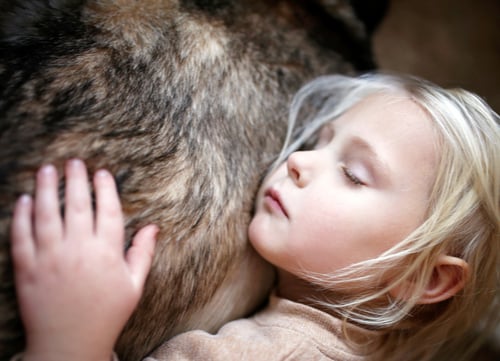
The Phase of Overcoming the Loss When You Let Your Dog Die Naturally
If you decide to let your dog die naturally at home, that special time with our dogs, in the end, can help us face the loss easier than if they were swept away from us at the veterinarian. Some simple tips that can help us face the loss of our dog in the most positive manner are:
Learning to Overcome Sadness
In these moments, it is necessary to have the opportunity to be sad and the freedom to express it with family and trusted friends. This step is not easy, but it is essential to face the animal's death in the best possible way. Bitterness shouldn't be the only feeling at the memory of our dog. It is good to recover the moments shared with the dog in these sad moments and learn to stay with that pleasant feeling.
Feel Free to Cry
Tears express the pain we feel and help release inner anguish. It is normal to miss a loved one, and admitting it is the first step in coping with the loss.
Never Blame Yourself for Your Pets Death
It is common, especially in situations of traumatic and sudden losses such as those that occurred due to an accident or a sudden disease. These feelings arise because we feel responsible for our animals' welfare, and we do not understand how it could have happened. In either case, our friend is gone forever, and spending energy looking for culprits can be wasted energy.
When Good Memories Overcome the Pain
The pleasant memories have been many, and the good moments shared will always be there. Over time, the sadness slowly disappears, giving way to the calm produced by our furry friend's good memory. When we allow our dog to die naturally at home, we allow ourselves to cherish memories during this difficult time.
Call the Vet
In the end, and when the time is right for you, it is time to contact a trusted veterinarian. They can guide you and explain the steps you need to follow and facilitate someone who can collect your pet's body. Some veterinary clinics will offer to hold the body until you decide on burial or cremation. Cremation is the most common, and your veterinarian will make those necessary arrangements.
Communicate With A Registry
The procedures are not complicated for the pet owner. It is easy enough for you to call and cancel the animal's microchip, consisting of fifteen digits. Then, the death is registered in the database. Depending on the locality in which you reside, there may be a pet census. If this is the case, it will also be necessary to process the cancellation in your corresponding county.
Allowing A Dog Die Naturally, Don't Lose Sight
- The impact caused by the death of the canine companion can be as intense as the one we feel when a loved family member is lost.
• It is necessary to have the opportunity to be sad, even cry, if necessary, and the confidence to express it to family and friends.
• The feeling of guilt is normal, and we must assimilate it as part of the process of overcoming the death of the dog.
• Patience is a good ally: The time and memory of the good moments shared with the dog help assimilate the loss.
• The pain caused by a loved one's death can be intense and long-lasting, but sooner or later, it subsides.
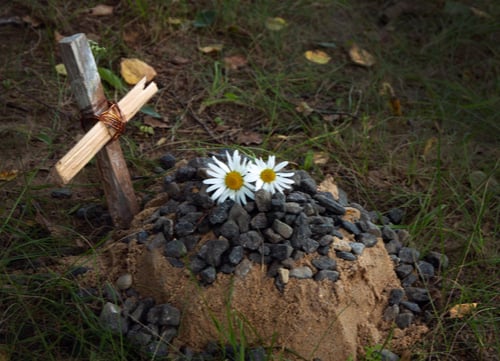
What Can We Do Before and After to Overcome the Pain After Letting Your Dog Die Naturally?
Put Words to Your Farewell
Writing a letter dedicated to the lost dog helps to organize ideas and express feelings. In a few words, you can collect the multitude of feelings that we go through and thank our dog, the time he has dedicated to us, and everything he has contributed to our lives.
Prepare a Formal Farewell
It's not for everyone, but you can hold a small farewell ceremony depending on your ideology and budget. There are animal cemeteries that can help with this task, and there are even web pages to remember our furry forever. This action has the triple function of calming the initial pain, mourning with family and close friends, and saying goodbye to your friend.
Keep with the routines.
The time you have shared was full of schedules and routines that can now become a heavy burden. It is advisable to keep those habits, at least for a time.
Go out and take a walk. Smile at those who have been your dog's park companions, and enjoy the places you traveled with him while remembering everything you have shared. Remembering the time you spent together, the games, the laughs, and the good times can be healing.
Little by little, you can substitute old routines for other activities. It is important to keep our dog's good feelings and memories whenever we feel the need for it.
Irreplaceable
It is not a good idea to adopt a dog to replace the missing one. Comparisons are common, and it is difficult to appreciate the new animal when we recognize the dog that is no longer there. Each one is unique, with a different personality and a particular way of behaving. Take your time before taking the plunge. Once you have accepted the death of your dog, then you will be ready to adopt another and give all that love you feel for these animals.
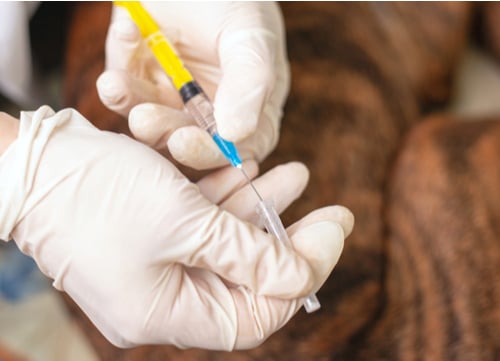
Pet Euthanasia is Not The Same as Natural Death (Dog Die Naturally)
Euthanasia is a veterinary operation that aims to shorten the animal's suffering by injecting an overdose of anesthetic into a vein in its legs. The dog gradually falls asleep and leaves painlessly.
The veterinarian performs euthanasia after discussion and decision by the owner. This medical procedure is supervised.
Procedure of Euthanasia
The animal is installed on the operating table. He is kept there for his safety. If he is anxious or agitated, he is given a sedative to calm him down.
The vet first injects him with an anesthetic overdose, and the dog falls asleep painlessly and gently. A second dose is used to stop his vital functions. The vet checks to see if the animal is still alive after 10 to 15 minutes. If necessary, he administers a new dose of the product.
When the animal is declared dead, its owner – or the veterinarian, if necessary – takes care of the preparation of its burial.
Euthanasia can also be performed by administering barbiturates. In this case, the dog is placed under general anesthesia by the veterinarian before administering barbiturates. The animal is thus previously asleep, a solution that seems easier to accept for some owners. It is also possible to practice this solution from a distance thanks to a catheter that leaves you alone with your animal to share his last moments.
Euthanasia lasts about 10 minutes. When your dog lets out his last breath, his bladder and bowels may empty at the same time.
Conclusion
The loss of our dog is difficult, without a doubt, but we must not lose sight that, with time, the memories turn into something pleasant, and the pain dissipates. The time that the animal has given us is something that we will value even more. We must bear in mind that it has always been and will always be a loved and remembered family member.
There is no set period for the sentence to remit, but what is certain is that it will.
Read Next: 15 Ways to Prepare for the Last Days of Your Dying Dog
